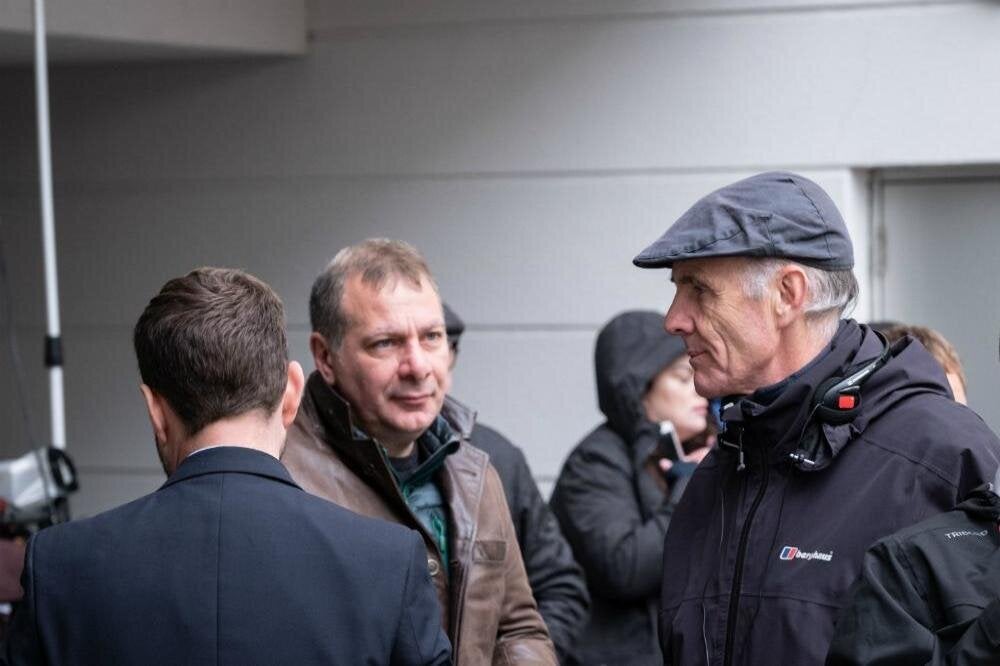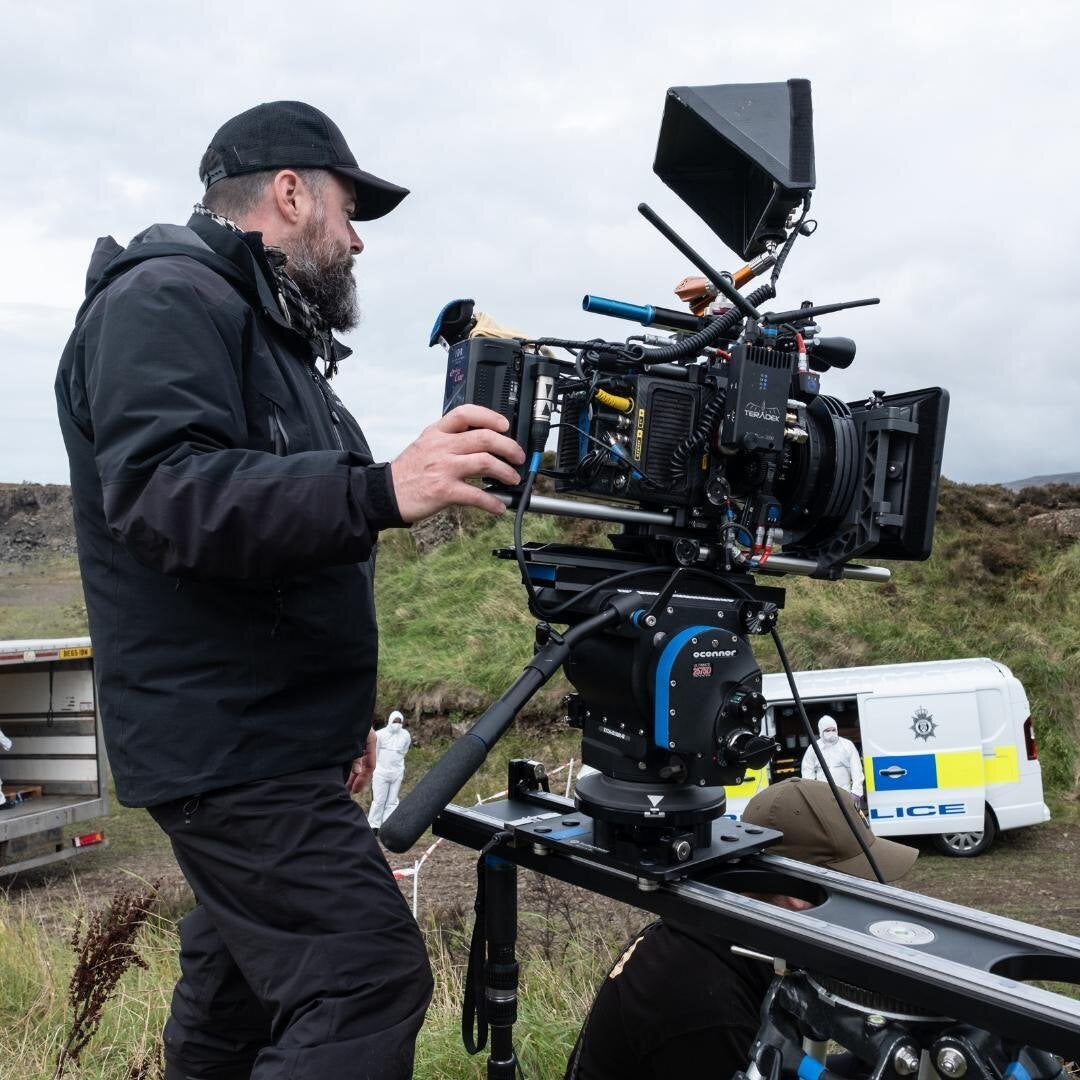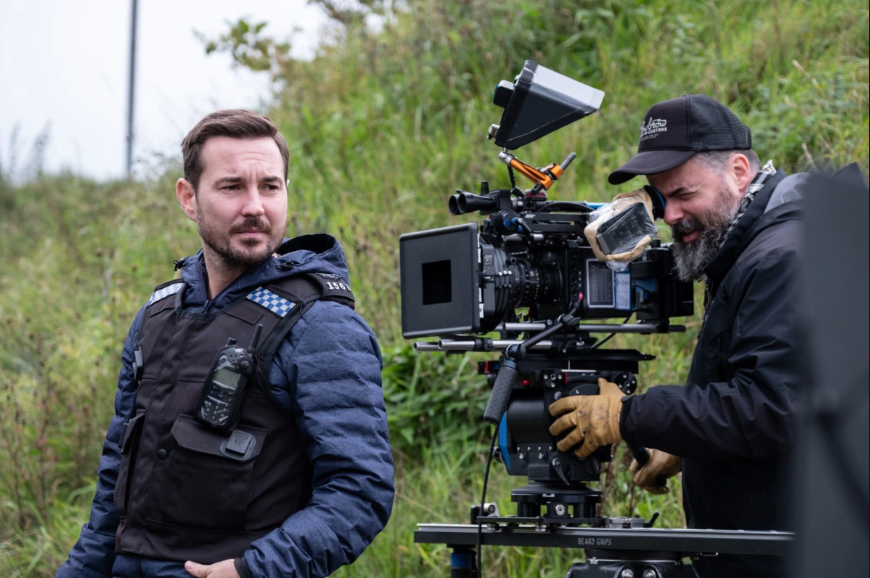After making a low-key debut on BBC Two seven years ago, Line Of Duty has become a force to be reckoned with, now lauded as one of the greatest and most popular dramas of our time.
While its profile (and ratings) has soared since moving to BBC One in 2017, there is one thing that has stayed the same since its inception – its meticulous attention to detail.
But what does it really take to make a show so rooted in procedure as Line Of Duty?
Ahead of the series five finale, which is expected to uncover whether AC-12 boss Ted Hastings really is organised crime boss ‘H’, we spoke to executive producer Simon Heath, and police adviser to Line Of Duty (and Bodyguard) David Zinzan to find out...
The police were not keen on cooperating when the show started
With the show’s writer and creator Jed Mercurio insistent that the show must be as authentic in its depiction of police procedures as possible, the team had to seek the help of professionals in the development of the series.
However, they faced huge resistance, according to executive producer Simon Heath, who previously worked with production company World on 90s police shows Between The Lines and The Cops.
“We sent them the first episode which features the accidental shooting of an innocent man suspected of being a terrorist and it was drawing on a number of real-life incidents,” Simon says, “but had a letter back from the police saying we won’t cooperate with you on this show as this would never happen. Jed and I were just bemused as obviously there had been these incidents.
“So we then had to do our own off-the-record research and conduct interviews with officers who were perhaps coming to the end of their careers, or were retired or were happy to talk to us anonymously.”

However, as the series become more popular, more advisers have come on board
Simon says: “What’s happened since the early days, various people have got in touch with Jed and myself – either serving or recently serving officers – that wanted to help out. You accumulate a bank of people with direct experience of working in different facets of the police force, which then helps to inform our show.”
Describing how the process works, he continues: “Jed will often have a particular subject area he wants to explore in the series – in three, it was firearms officers, and this time it was undercover officers. So Jed will go and speak to someone who is a specialist in that particular area and start to dig out some of the broad information, which starts to get his ideas flowing about the direction the story might take.
“There then might be particular technical stuff within that story that needs looking at and researching. For instance, in series five, the whole area of what police do with seized contraband. We hadn’t realised there were these armed storage facilities where the goods were kept where files were on going. We discovered they are taken to be destroyed at a special facility in a convoy. So suddenly, it all started to get very exciting because you can see the potential of how organised crime would affect that process.”
As well as meticulous planning and research, there is still always a police advisor on set to inform the story
In recent years, this has been the job of former Metropolitan Police officer David Zinzan, who has over 30 years experience in the force, right from the rank of constable up to commander. In that time, he worked departments focussing on homocide, counter terrorism, anti corruption and serious and organised crime – all staples in Line Of Duty.
“I am there to be an extra set of eyes, and Jed is very clear that if I see something that isn’t right, I have to point it out,” he explains.
“My job is to stand with Jed and the director and make sure that the procedures, the techniques and the language is correct, and I’m also a resource for the actors, who frequently ask me questions about what their character would be thinking or the expression on their face.
“I also assist with regard to what police interview and incident rooms might look like, it terms of what’s on notice boards etc. I will walk in somewhere and instinctively know if something looks right or not.”
It is a multi-faceted role though, as prior to coming on set, David is sent the scripts before hand to go through with a fine tooth comb.
He says: “I get a first draft and I will go through to look for language and procedures and highlight where I think there will need to be extra work done, or if a scene is particularly complex. I have to have a police set of eyes and ask if that would be what would happen in an ordinary situation.
“I pass my comments back to the production and Jed, they go through them and then another set of scripts will come out for me to check. Each script is about 70-odd pages of dialogue with a lot of different versions to get it right, so it’s a lot of work.”

Even with the best planning, David still has to step in and correct mistakes
With so many people involved in making the show (there’s about a 90-strong crew working during production), mistakes are bound to happen – and they do.
Revealing some of the errors he’s had to correct during filming, David says: “In series four, a superintendent was giving a briefing to a group of firearms officers about to go out to a raid, but the uniform he was wearing was the wrong one for the ranking he was meant to be. Fairly straightforward for me to spot, but not for someone who is not in the police.
“Then the abduction of Leonie Collersdale in the first episode of series four, which we shot over three night shoots, I noticed there were onlookers hanging around inside the cordon. I had to stop the scene and say they had to be moved right back because they would not be in the crime scene in real life.”
So how much artistic license is used in the show?
It is one question Line Of Duty fans ask most – how real is it really? Well in terms of procedure, pretty darn close to the truth. However, David admits you’d be hard pressed to find such a corrupt force in real life.
“Corruption is a real thing, but it’s very small numbers,” David explains. “I never saw it quite as bad as it is on the show.
“If you look at the amount of corruption in this one particular fictitious force in England, it really does appear to have a problem with corruption at all levels.
“Obviously it is a drama series, not a documentary and that is the point I stress to people.”
Asked if there is one thing that has ever made it to air that he’s raised an eyebrow at, David adds: “In the final episode of series four, Hastings fires a gun and kills someone. In real life, they wouldn’t let a Superintendent anywhere near a gun. All firearms operations are carried out by more junior officers who do it day after day. They are highly professional, highly trained. Hastings wouldn’t be given access to a firearm or have all that training.
“Apart from royal protection, senior officers do not carry guns in mainland Britain.”
The art and props team are also among the first to get the scripts
Much planning has to go into the creation of all the documents, databases and police files that help bring the world of AC-12 to life, and the show’s talented art and props team are among the first people the scripts are shared with, so they can get a head start in making and developing everything that’s required.
Exec Simon Heath says: “We have a brilliant design department who have always been incredibly strong on graphics – they are second to none. It is such a big task.
“They get the scripts quite early so they can get stuff done in advance, which can then be tweaked later in the day if we make some particular changes.”
The show is shot completely out of order
It takes 16 weeks to film a series of Line Of Duty, and usually they film the first three episodes first, followed by the second three, in what is known in the TV industry as two “blocks”.
However, within these blocks, much of the action is filmed out of sequence.
“It all depends on the availability of actors, locations and if it’s the most efficient way of achieving it,” Simon says.
“Obviously, editorially, the more you can keep filming in story order is better, but that’s not always possible.”
Sounds like an absolute headache to us.
Jed is still writing the final episode of the show when the first three are still being filmed
While you’d think a show as complicated as Line Of Duty would be pretty much set in stone before any actor even stepped on set, turns out that’s not how writer Jed Mercurio likes to work.
In fact, the final episode of the series isn’t even fully fleshed out by the time the first eight weeks of filming starts, because he likes to change things up as he reacts to seeing the first block of three episodes being shot.
“Because Jed’s on set a good deal of the time means he’s watching stuff, then going to the edit and watching it, then ringing through any rewrites, Simon, who has been with the show since day one, explains, “There’s always that flexibility in that system we have created to rewrite stuff. We can organically react to the way a certain scene is played or certain characters that come in, and we might like to bring that particular one back in later on.
“Jed will have the basic structure of episode six, but he’ll allow himself to be able to change and adjust it as the early rushes come in. By the time we get to the edit, we’ve locked it down, but certainly in the early stages of filming where we’ve got rough cuts, we’re still working on episode six.”
The iconic interrogation scenes can be filmed up to 20 times each
The interview scenes in AC-12’s headquarters have become synonymous with the show, with some particularly tense ones often playing out on screen for in excess of 20 minutes.
But have you ever wondered how they actually film those scenes? Well, we asked and the answer blew our minds.
It turns out, they shoot them in one continuous take, often repeating the scene up to 20 times so that the editors can cut together all the best bits and make a TV masterpiece.
Simon reveals: “We’re in a real building in the centre of Belfast, which has all the problems of a normal office with noise, and then you have a crew of about 70 people on the floor and a cast in a glass interview box. There’s three cameras in the glass box all taking different angles and sizes, and as soon as the assistant shouts ‘action!’ we do the whole scene until they call cut. During that time, no-one can move, otherwise it breaks the whole thing. So you batten down the hatches, make sure you go to the toilet and don’t let your stomach rumble.
“Twenty times to shoot one scene like that might sound a lot, but with the number of characters and the cameras, it isn’t actually that many. With three cameras, you’re effectively generating 60 shots in which to tell the story, and they then cut together those 20 cuts into one scene, with the editors cherry picking all the best looks, the right action and detail.”
And even if someone messes up – which Simon says the usually “word-perfect cast don’t” – they just have to “play on, like you would in the theatre”.
Believe it or not, there’s no tight security to prevent spoilers from leaking
With a show that creates as much intrigue and as many headlines as Line Of Duty, it’s quite a feat that there has never really been any major spoilers published ahead of the show going out.
And while other shows might carry out huge security operations to ensure there aren’t any leaks, that isn’t the case on this production.
While everyone on set does sign a non-disclosure agreement, Simon credits the cast and crew’s commitment to wanting to constantly surprise their audience.
“What’s brilliant is that everyone behind and in front of the camera, they don’t want to spoil it for anyone, so they don’t say anything,” he says. “Compared to some shows, we’ve been fortunate not to have leaks. It possibly helps that we film in Belfast where there’s perhaps less paparazzi attention than you might get in London or other main cities.”

Martin Compston is so method on set, some of the crew didn’t realise he was Scottish
By now, most Line Of Duty fans know that Martin Compston is Scottish in real life and speaks with a thick Glaswegian accent. However, his method way of doing Arnott’s Estuary accent has sparked some hilarious moments on set.
Recalling a specific moment at the end of filming season one, Simon says: “On that series, he’d stayed in his English accent both on and off screen, the whole time. As they shouted ‘wrap!’ on the final scene, which was being shot in a pub in Birmingham, Martin burst in and started talking ten to the dozen in his usual Glaswegian accent. Everyone is laughing, but at least 50% of the crew were gobsmacked, because they were so certain he had a London accent that they had no idea.
“We would be going for dinner or a drink completely off set and he’d still be in the accent, but now he feels more agile in it and is more happy to switch between it and when we go for a curry his normal accent comes through.”
However, he still very much chooses to stay in Arnott’s accent whenever he is on set, regardless of whether he’s filming or not, Simon confirms.
Line Of Duty concludes with an extended 90-minute episode on Sunday at 9pm on BBC One.